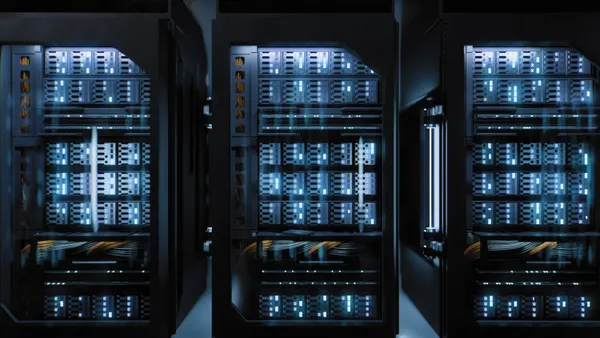Dive Brief:
- The Indiana Department of Transportation (INDOT) is partnering with Purdue University and German infrastructure technology company Magment on a pilot project to develop the world's first paved highway segment that contains contactless, wireless technologies to charge electric vehicles as they drive over it.
- Purdue engineers are designing and testing the dynamic roadway, which incorporates Magment's magnetizable concrete component, to determine if it is viable for Indiana roadways.
- The first of three project phases — research and lab testing — began this month. Purdue hopes to wrap the first two phases by the end of next year, said Steve Pekarek, professor of electrical and computer engineering. The third phase involves constructing a quarter-mile test road at a to-be determined location, hopefully sometime in 2023. If the solution is deemed viable, real-world product implementation on Indiana highways could occur in about three to four years.
Dive Insight:
This project is part of Advancing Sustainability through Powered Infrastructure for Roadway Electrification (ASPIRE), a National Science Foundation-funded research and development initiative to accelerate sustainable and equitable transportation electrification. Purdue's Pekarek says being part of this type of consortium is beneficial for information sharing to advance the technology.
"There is a leveraging effect of this and a critical mass getting established in the U.S. to foster such development," he said.
Purdue and INDOT will document their study results to guide others around the world who are examining this new technology, especially considering it is such a new, largely untested innovation.
"The intent would be for the partners to publish all our findings and make it publicly available for others," said Scott Manning, deputy chief of staff at INDOT. "Anyone operating in this space will be able to leverage the data that we have to inform their own research or product development."
INDOT is looking at installing the technology in areas that experience heavy commercial truck traffic to support heavy-duty fleets' transition to electric vehicles. The partners have not yet made a firm decision where the initial real-world roadway section would be trialed.
"In the final phase we want to walk away with a strong understanding of how this technology would work on a day-to-day basis and its viability on large scale," said Manning. "Our goal would be to implement a segment length that would give us the breadth and depth of data that would inform whether this is something we could do statewide and be deployed on global scale."
They intend to test the magnetic roadway's strength, durability and functionality under different weather conditions in Indiana's climate. Some engineers believe warm regions will have more success with this technology than cold climates, at least initially, said Mark Kosowski, technical executive at the Electric Power Research Institute. He explains that states already have a hard time keeping up with road maintenance, including fixing buckling and potholes; this is especially true in areas with harsh winters. Incorporating expensive elements like the magnetic roadway and related electrical components could make maintenance more complex and costly, he said.
"I see the concrete in this roadway system being torn up and needing constant maintenance of the system," Kosowski said. "I think [it's] feasible. I think it's going to be expensive, though."
The Purdue engineers are working to address these considerations and others. For example, the electric charge has to work across the air gap between the road and a receiver in the EVs, which is challenging.
"We're trying to implement those conditions on our design to make sure it can withstand large variations with temperature, if water gets into the system and what happens if you vary the distance between the vehicle receiver and the transmitter in the roadway," Pekarek said. "How do you go about repairing such a system or ensure it doesn't get damaged when repairing the roadway? Those are all representative design concerns."
Dynamic roadway R&D and pilot projects are taking place across the world — mostly abroad — including in Germany, Italy and Tel Aviv. Higher learning institutions including the University of Auckland in New Zealand and Cornell University continue to release studies advancing the technology. But implementation on actual public roadways still is a big hurdle.
Currently, implementing static wireless EV charging technologies has gained more traction than dynamic charging. The concepts work similarly except that with static charging the cars remain stationary over an electrical transmitter as opposed to moving over longer stretches of electrified roadways.
This type of innovation is in the works in Norway, where charging plates are being installed in the road at taxi stands so cabs can wirelessly charge while they wait for a customer. Kosowski said that the expense and small charge that cars receive when moving over sections of dynamic roadways makes stationary wireless charging infrastructure more attractive in many instances.
However, a dynamic road pilot project being developed in Sweden, eRoadArlanda, explains that the current technology is meant to give an extra boost to reduce EV drivers' range anxiety — drivers' fear of not having enough charge to reach a destination — while traveling long distances, whereas primary charging occurs at fixed points such as homes, work or stores.
While most of the research taking place focuses on perfecting the dynamic charging capabilities, future research could tackle issues like the possibility of tapping into the roadway conductors' electricity to thaw surface ice, Pekarek said. This feature could extend the life of the magnetized concrete and underground power delivery systems.
Details are still being worked out regarding who would be responsible for electrified roadway oversight, management and funding. For instance, utilities might become involved with future projects to ensure long-term roadway electrification, and they would have to work out with the other partners how to pay for the consumed electricity — perhaps by billing roadway users.















